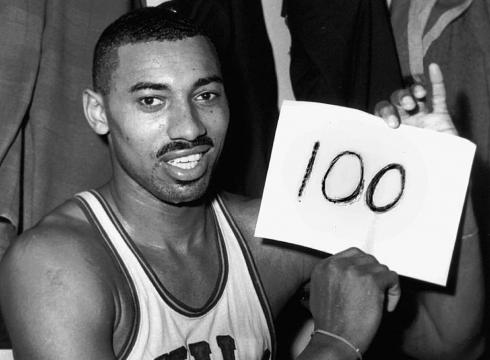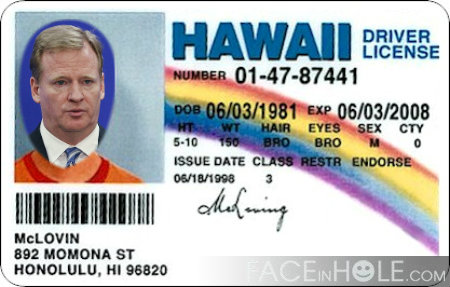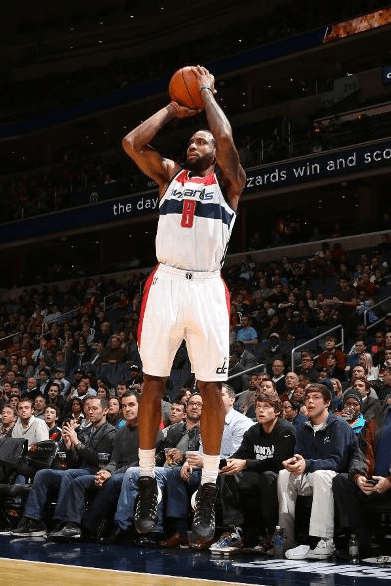At 21-8, the Wizards are off to the second best start in franchise history. Check out the very bottom of the table in that link and note that Washington had its worst start in franchise history just two seasons ago. The front office’s strategic shift to proven veterans combined with a historically weak Eastern Conference to bring about an abrupt about-face in the team’s record.
While the Wizards have enjoyed the league’s easiest schedule so far, things are about to change. To this point in the season, Washington’s opponents have been 1.32 points per game worse than average. Over the next 19 games, their competition will be about a point per game better than average.
To say it another way, Washington’s average opponent so far this season has been the equivalent of a 37-win team — a lottery squad in either conference most years. Over the next quarter of the season, their opponents will be the quality of a 44-win team — a near-lock for the playoffs in either conference.
The next five games will likely be the toughest stretch of the regular season. Over the next week, Washington has road games against Houston, Dallas, Oklahoma City, San Antonio and New Orleans — and the schedule includes two sets of back-to-back contests.
The Wizards will be underdogs in all five games, and their average competition this week will be equivalent to a 50-win squad. It won’t be easy.
I ran the numbers in my “who’s gonna win?” machine. The machine projects Washington to go 9-10 over the next month, including a five-game skid starting tonight. This will likely test the faith of Wizards fans, but I think reality for Washington is that they’re a solid team in a weak conference.
Based on how teams have performed to this point in the season, The Machine predicts Washington will go 33-20 over their remaining games to finish the year 54-28. This would be tied with the 1978-79 Bullets for the third best mark in franchise history. Fans my age might recall that the 78-79 team went to the NBA Finals where they lost to Seattle. I suspect fans of any age would be ecstatic if this year’s team reached the Finals and got thumped by a top-shelf Western Conference opponent.
Weekly Player Production Average Update
Player Production Average (PPA) is an overall rating stat I developed that credits players for things they do that help a team win and debits them for things that hurt the cause. PPA is pace neutral, accounts for defense, and includes a “degree of difficulty” factor based on the level of competition a player faces while on the floor. In PPA, 100 = average, higher is better and replacement level is 45.
| PLAYER | GMS | MPG | 10-Nov | 18-Nov | 24-Nov | 3-Dec | 8-Dec | 17-Dec | 23-Dec | PPA |
| Marcin Gortat | 29 | 29.7 | 181 | 186 | 170 | 175 | 179 | 178 | 178 | 173 |
| John Wall | 29 | 35.8 | 185 | 180 | 180 | 168 | 167 | 175 | 171 | 171 |
| Paul Pierce | 28 | 27.0 | 140 | 138 | 165 | 134 | 134 | 154 | 142 | 143 |
| Rasual Butler | 25 | 22.8 | 60 | 131 | 116 | 128 | 155 | 140 | 134 | 123 |
| Kris Humphries | 28 | 21.9 | 46 | 87 | 90 | 82 | 109 | 100 | 88 | 109 |
| Bradley Beal | 20 | 33.0 | 122 | 63 | 69 | 94 | 90 | 98 | ||
| Nene Hilario | 22 | 24.2 | 108 | 102 | 68 | 67 | 83 | 94 | 96 | 97 |
| Andre Miller | 29 | 12.4 | 72 | 69 | 92 | 103 | 102 | 101 | 89 | 85 |
| Otto Porter | 28 | 19.0 | 97 | 106 | 101 | 95 | 84 | 81 | 84 | 82 |
| Garrett Temple | 25 | 14.4 | 121 | 112 | 96 | 100 | 98 | 91 | 90 | 75 |
| Drew Gooden | 18 | 13.3 | 42 | 40 | 59 | 78 | 64 | 47 | 47 | 44 |
| Kevin Seraphin | 28 | 15.3 | 38 | 13 | 17 | 12 | 28 | 34 | 45 | 36 |
| DeJuan Blair | 9 | 4.6 | -41 | -40 | -40 | -74 | -56 | -47 | -46 | -34 |
| Glen Rice | 5 | 8.6 | -120 | -117 | -117 | -117 | -114 | -113 | -111 | -111 |
Plenty of stability in this update as several players seem to have established their performance levels.
Humphries went back into “above average” territory with two outstanding games off the bench this week.
Butler’s production seems to be coming back to earth after preposterously torrid shooting for the first 20 games of the season. Hopefully, whatever’s lost from his return to norms will be offset by improvement from Beal.
After improving his PPA in three consecutive updates, Seraphin spent the past week Seraphining. Over his past three games, Seraphin played 40 minutes. During those minutes on the floor, he scored 20 points (yay points!) while getting three rebounds, one assist, no steals or blocks, but four turnovers and seven fouls.
He did shoot 10-20 over those three games, but he got to the free throw line just once (he missed). His 50% shooting isn’t bad — league average efg is .499. But, add in the turnovers, the lack of offensive rebounds and the inability to get to the free throw line, and his offensive rating (points produced per individual possession x 100) was just 81 — 25 points below league average, and nearly 27 points below the Wizards’ average over the past three games.
With the schedule getting tougher, it’s time for the Seraphin experiment to end.








